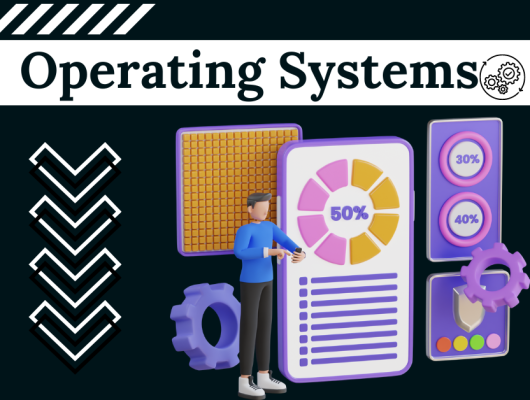Navigating the dynamic online landscape demands the strategic application of programmatic SEO. This innovative approach integrates advanced technology and automation to swiftly optimize in the face of fierce competition. By deciphering massive volumes of data and discerning patterns and trends in search algorithms and user behavior, businesses can make informed, data-driven decisions for substantial enhancement.
Unlike conventional manual optimization tactics, the adoption of programmatic SEO empowers organizations to realize more efficient and impactful outcomes through systematic, automated solutions.
The crux of success in the digital arena lies in embracing the power of automation to meet the challenges of SEO head-on. Programmatic SEO not only keeps pace with swiftly changing search algorithms but also allows businesses to adapt to evolving user behavior in real time. By leveraging automated solutions, companies can promptly adjust strategies, ensuring continuous and informed optimization.
The capacity to process and interpret massive volumes of data positions businesses to thrive in the fiercely competitive digital landscape, making programmatic SEO an indispensable strategy for sustainable success.
What is programmatic SEO?
Implementing a Programmatic SEO strategy for your website involves utilizing automated tools and advanced algorithms to enhance search engine performance. By leveraging data and analytics, you can make data-driven decisions to optimize your site with the right keywords and create targeted content.
This approach not only improves the execution of your SEO methods but also proves to be a potent way of increasing organic traffic and raising your search engine rankings. Incorporating technology such as artificial intelligence can further speed up the optimization process, delivering better results in less time.
The challenges of programmatic SEO
Implementing a Programmatic SEO strategy is a universal solution for businesses aiming to stay relevant and helpful in the ever-changing digital landscape. Neglecting this aspect can lead to wasted effort and accumulate tech debt and content debt on both the developer side and content side of a website. To ensure that pages remain up-to-date, businesses can leverage Generative AI to automate the process, adapting to the changing algorithms and uncertainties that may affect their online presence.
As time goes on, this proactive approach not only saves valuable time but also hedges the risk associated with data-driven decision-making. Businesses that try to build their online presence without a solid strategy risk affiliating with blogs and similar pages that may not be converted into meaningful outcomes.
Why does programmatic SEO matter?
Embracing Programmatic SEO is vital in today’s dynamic digital environment, where maintaining competitiveness requires optimizing website rankings on search engine result pages (SERPs). For an organization specializing in handmade jewelry like artisan earrings, the strategic use of keywords becomes paramount.
This involves applying a tailored approach to enhance company visibility and appeal to potential buyers within the target market with terms such as “unique handcrafted jewelry.” By doing so, the business ensures it can outperform rivals in the ever-shifting online market, staying attuned to shifting market trends and the latest search engine algorithms.
The effectiveness of Programmatic SEO results lies in its power to not only boost website relevance but also to actively attract customers by aligning with the preferences of website visitors and converting them into paying consumers. Regular adjustments based on the evolving digital landscape turn this approach into a formidable tool for enhancing business performance online.
With a meticulous focus on both website accessibility and the thematic application of “unique handcrafted jewelry,” the business not only meets current customer needs but also establishes a solid foundation to continually optimize its position, applying lessons learned to consistently attract customers and outperform rivals.
How to do programmatic SEO
In crafting a marketing strategy for your business, the key steps involve the thoughtful implementation of programmatic SEO. By leveraging programmatic SEO tools, businesses can explore a more efficient and data-driven approach, leading to better results in terms of website conversions.

The benefits of embracing programmatic SEO include enhanced targeting precision and improved scalability. In conclusion, integrating programmatic SEO into your marketing arsenal is essential for staying ahead in the dynamic digital landscape.
Step 1: Conduct keyword research for programmatic SEO
Programmatic SEO involves strategically undertaking six crucial steps to increase the likelihood of a website appearing higher in search results. One of these steps is conducting keyword research to identify valuable and practical phrases. This information guides the creation of website content, ensuring that it is optimized for the identified keywords.
By performing programmatic SEO effectively, a website can successfully undertake the challenge of appearing higher in search results, ultimately benefiting from increased visibility and traffic.
1. Brainstorm a list of potential keywords
When establishing a website, selecting the right primary topics is a crucial starting point. To captivate visitors, creating creative and engaging content that addresses the challenges of your target market is essential. Utilizing programmatic SEO techniques allows you to incorporate prospective keywords, synonyms, and keyword variants to generate an extensive list of terms and phrases.
Regularly evaluate and refine your information to ensure it aligns with the evolving needs of your audience. By thinking outside the box, your website can effectively implement strategies that not only attract but also retain visitors interested in your items/services.
2. Identify modifiers and related terms
The online running shoe retailer implemented a programmatic SEO technique to improve their website’s visibility in Google search results for “high-performance running shoes for men.” By strategically incorporating modifiers, such as “trail-running,” and focusing on the principal keywords like “high performance” and “running shoes,” they aimed to attract individuals who expressly seek top-notch athletic footwear.
Additionally, their content strategy involved not only featuring the desired products but also locating and including related terms in articles and guides about running gear, marathon training, and injury prevention. This approach aimed to expand their reach and attract a wider audience interested in various aspects of running, thus providing information and guidance to visitors looking for high-performance running gear beyond just shoes.
3. Consider long-tail keywords
To increase organic search results on our website, we should implement a programmatic approach to SEO by identifying and incorporating long-tail keywords and specific search phrases related to the unique needs of our niche audiences. By addressing specific issues and providing precise content on topics like “Best home gym equipment for small spaces” and “Top-rated resistance bands for at-home workouts,” we can attract a targeted audience with lower levels of competition.
This strategy not only optimizes our chances of appearing in relevant searches but also enhances the likelihood of attracting qualified leads who are actively looking for fitness equipment tailored to their requirements.
4. Use keyword research tools to gather data
To boost the online presence of NYC landscapers, implement Programmatic SEO by using KeywordsFX, a powerful keyword research tool. Compile data on the number of searches and keyword competition for landscapers in New York City. Identify geographically relevant keywords and incorporate them into your content for effective website optimization.
Utilize the modifier suggestion tool to discover related keywords and increase the chances of drawing in clients through local search results in the target area. This strategic approach to incorporating relevant keywords ensures that your landscaping services stand out, driving more visibility and engagement.
5. Analyze the search intent behind each keyword
Implementing programmatic SEO in the bustling New York City landscape requires a deep understanding of the search intent of city residents. Professionals catering to the needs of NYC landscapers must modify their content to include specific phrases that align with the preferences of the target audience. By creating content that directly addresses the intentions and requirements of users, the proficiency of the material increases the chances of attracting and converting potential customers in this competitive city.
6. Evaluate the competition for each keyword
Utilizing a competitor analysis tool is essential for evaluating the level of competition in the online market. By examining websites and their ranking positions, domain authority, and backlink profiles, one can assess the caliber of the competition. This assessment provides insights into areas of weakness and identifies room for growth, allowing strategic improvement of one’s own content for better visibility in SERPs.
Analyzing the competitor’s approach to keywords, relevancy, and originality is crucial for establishing a competitive advantage and making your brand stand out over time.
Step 2: Optimize your website’s meta tags to include target keywords
Implementing programmatic SEO involves a strategic approach to optimize a website’s meta tags. It is crucial to incorporate target keywords into the title tag and meta description for effective search engine visibility. By carefully planning and implementing these optimizations, a website can enhance its online presence and better strategically attract its desired audience.
Prioritize keyword placement in title tags
The title tag is a crucial element of a website as it directly impacts how search engines display your site in search results. At the beginning of the optimization process, it’s crucial to assess the relevance of the title tag to the user’s search query. A well-optimized title tag with the target keyword “bakery in New York City” and “Best Bakery in NYC” is a method to maximize its effectiveness.
This tactic sends a clear signal to search engines about the site’s region and helps increase the visibility of the website. By incorporating specific opening keywords like “best bakery” and emphasizing attributes like “Healthy” and “Freshly Baked Treats,” you can generate more focused and organic visitors to your site. It’s crucial to appropriately summarize the webpage content in a concise, clear manner within the title tag to ensure its effectiveness.
Craft compelling and relevant meta descriptions
Creating an effective website requires effort in crafting a well-written content that highlights your unique selling points (USPs) and persuades visitors to take action. For example, a meta description with compelling language can entice readers and boost the click-through rate. Transform your website’s title tag to incorporate target keywords and summarize the page’s content, improving its relevance to search results.
Devote time to writing a crucial call-to-action, like “Shop Now,” to maximize the number of consumers who engage and purchase. By incorporating pertinent information, you not only improve the user experience but also maximize organic traffic. Make sure your content reflects the selling points, such as “skin care,” and persuades visitors to take action, thus improving the overall results of your website.
Step 3: Create unique and valuable content
1. Plan the content structure
To implement Programmatic SEO, develop a clear framework for your website content by dividing it into pertinent segments. Use engaging titles and subheadings to guide users’ navigation. Incorporate the target keyword strategically within the content structure. Arrange information in a logical order to ensure relevance for search engines and users. Bullet points and concise text can help users skim through the content easily. Create an exciting and engaging framework that aligns with the interests of your audience, making your content more attractive to both users and search engines.
2. Create engaging and informative content
Our commitment to delivering accurate and current information involves thorough research, incorporating diverse multimedia elements like text, images, and videos. The content employs personal anecdotes and storytelling techniques to be both relatable and memorable for readers. Clear headings, subheadings, and concise bullet points aid in easy digestion of the necessary information.
Interactive elements such as quizzes, polls, and surveys are integrated to foster active engagement from our readers. The inclusion of credible sources, references, and factual data ensures a trustworthy presentation that increases trust by allowing readers to authenticate the material independently.
Optimize the on-page elements of the content for programmatic SEO
Crafting a search engine-optimized website involves strategic on-page elements. Begin by thoughtfully implementing your title tag and meta description, seamlessly incorporating the identified keywords. Utilize headers, such as H1 and H2 tags, to establish a clear structure for both users and search engines. Remember to include relevant keywords in image alt text, enhancing accessibility and visibility in image search results, ultimately boosting your chances of appearing higher in regular search results. This holistic approach to on-page optimization assists search engines in determining the relevance of your content to specific search queries.
Maintaining an effective on-page strategy is an ongoing effort. Regularly review and update your meta tags, title tag, and meta description to incorporate keywords naturally and persuasively. Ensure that headers, including H1 and H2 tags, uphold a clear structure for users and search engines alike. Pay attention to image alt text, using it to include relevant keywords and improve accessibility. This comprehensive approach contributes to increased visibility, enhancing your chances of appearing higher in search results and assisting search engines in determining the relevance of your content to specific search queries.
Incorporate internal and external links within the content
Effective Programmatic SEO implementation involves optimizing not only the content of your website but also the structure. Utilizing strategic internal links enhances user experience by guiding readers to relevant articles and pages, thereby improving both credibility and authority. Meanwhile, judicious use of external links to reputable sources strengthens the references and material on your site, contributing to overall quality and relevancy. This approach not only benefits readers but also positively impacts search engine crawling and indexing, ultimately boosting your site’s search engine ranking.
By incorporating authoritative references and well-researched material into your content, you not only enhance the credibility of your articles and pages but also provide valuable resources for your readers. Strategic use of internal links ensures that users can easily navigate through the website, promoting a seamless user experience. Additionally, external links to reputable sources contribute to the authority of your content. This dual focus on user experience and authority not only strengthens your site’s position in the eyes of search engines but also establishes trust with your readers, making your website a reliable source of high-quality and relevant information.
Regularly update and refresh the content
Efficient Programmatic SEO is pivotal in today’s ever-evolving digital sphere. Keep your content current and indicative to consistently enhance your search engine rankings. Regularly evaluate and revise your material, incorporating fresh data to draw valuable insights from your audience. Committed to updating, this proactive approach ensures a strong connection with your visitors and mitigates any drawbacks.
To amplify the impact of Programmatic SEO, focus on optimizing the efficiency and effectiveness of your strategies. Target specific keywords for a personalized content approach tailored to your audience. Leverage automation and algorithms to enhance the overall performance, ultimately improving the user experience and fostering a seamless connection between your business and its online visitors.
Step 4: Optimize your website’s URL structure
Crucial for effective crawl and index processes is the optimization of your website’s URL structure. The impact on the relevance of pages to target keywords is direct. When structuring your gardening-related site, opt for subdirectories with descriptive words, steering clear of generic numbers or symbols. This hierarchical structure aids search engines in interpreting content framework, ensuring aesthetics and readability.
Preserve SEO value by avoiding frequent URL changes to prevent indexing issues. If modifications are necessary, implement 301 redirects from old URLs to new ones, providing seamless navigation for both visitors and search engines. This strategic approach not only utilizes redirects but also safeguards the ranking signals crucial for your website’s long-term success. Keep in mind, a well-structured URL enhances user experience and overall SEO health.
Step 5: Implement schema markup on your website
Here’s how to implement schema markup on your website for programmatic SEO:
1. Identify the relevant schema markup for your website
Utilizing Programmatic SEO involves implementing advanced techniques to enhance the visibility of a website in SERPs. One effective method is incorporating Schema markup for products, publications, and events, providing specific details such as price, availability, and user reviews.
This not only improves the click-through rates but also boosts the overall visibility of an e-commerce website in search results. Applying structured data to showcase ratings and relevant information helps users make informed decisions when exploring the website.
2. Incorporate schema into your website’s HTML code
Implementing schema markup tags in the HTML code of your website, especially on the pertinent pages managed by popular content management systems (CMS) like WordPress or Shopify, can significantly enhance your site’s Programmatic SEO. By utilizing plugins or extensions designed for schema markup, you streamline the process, ensuring that your content paragraphs are rich with semantic and contextually relevant words.
This implementation goes beyond traditional SEO techniques, as it integrates NLP to understand the context of your content, making it more discoverable by search engines. The benefits of incorporating schema markup into your website’s content management extend to improved search engine visibility and a better understanding of your site’s topic by algorithms.
3. Test the schema markup to ensure it is implemented correctly
When implementing schema markup on a website, it’s crucial to ensure the HTML code is free of any flaws or problems. Utilizing online tools such as the Google Markup Testing tool and Schema.org Markup Validator can help you verify and examine the correctness of your implementation. These programmatic SEO tools not only allow you to apply schema markup but also thoroughly examine and report any issues, ensuring that your website benefits from enhanced search engine visibility.
4. Monitor and update your schema markup as needed
To implement effective Programmatic SEO, it’s crucial to follow the latest guidelines and understand the evolving ranking factors of search engines. Utilizing schema markup in your website’s content can significantly enhance the efficiency of information delivery. Regularly modify and update your website to ensure it matches the current state of your industry, as these modifications can have a substantial impact on your ranking over time. Always keep up with changes in search algorithms to ensure your website maintains its optimal performance and relevance.
Step 6: Regularly monitor and analyze your website’s performance
By consistently tracking and evaluating metrics like page views, bounce rate, and conversion rate, marketers gain valuable insights for data-driven decisions. Utilizing Google Analytics and a comprehensive dashboard, these efforts optimize marketing techniques through programmatic SEO, contextual NLP, and A/B testing. This iterative approach, focusing on landing pages and call-to-action buttons, enhances user experience, yielding higher conversion rates.
Regularly implementing modifications based on learned information ensures efficiency and resource allocation is directed towards areas of improvement, addressing bottlenecks and engaging visitors effectively. The campaign’s performance is thus dynamically enhanced through a strategic understanding of website analytics.
Drive revenue with programmatic SEO services from Digivider
Digivider, a leading SEO services provider agency, boasts a team of over 500 experts dedicated to implementing cutting-edge programmatic SEO strategies. Their primary goal is to enhance online visibility and drive substantial organic website traffic.
Utilizing a data-driven approach, they thoroughly evaluate the effectiveness of websites, pinpoint areas for improvement, and create specialized techniques to deliver the desired outcomes. Whether for a small business looking to boost its visibility or a large corporation aiming to dominate search engine rankings, Digivider’s comprehensive services cater to diverse needs.
Questions Related To Programmatic SEO
What is a programmatic SEO?
What Is Programmatic SEO? Programmatic SEO involves creating landing pages on a large scale to rank on search engine results pages (SERPs). It’s sometimes referred to as pSEO. Each landing page starts from the same template containing the same elements (e.g., images, pricing, reviews, etc.).
What is programmatic SEO with practical examples?
Simply put, programmatic SEO is a method that addresses the growing amount of search traffic by publishing landing pages on a large scale. As an example, Tripadvisor has a page for almost everything travel related. Yelp has a page for all business searches.
What is programmable SEO?
Programmable Search Engine enables you to create a search engine for your website, your blog, or a collection of websites. You can configure your engine to search both web pages and images. You can fine-tune the ranking, add your own promotions and customize the look and feel of the search results.
How much does programmatic SEO cost?
SEO pricing, on average, costs $75 to $150 per hour. For monthly SEO services, you may pay $500 all the way up to $8,000 or more. It all depends on the expertise of the SEO professional you hire and the scope of work to be done.2
What are the 4 main components of programmatic?
There are 4 main components that create a basic programmatic advertising ecosystem:
- Demand-side platform (DSP).
- Supply-side platform (SSP).
- Data management platform (DMP).
- An ad exchange.







